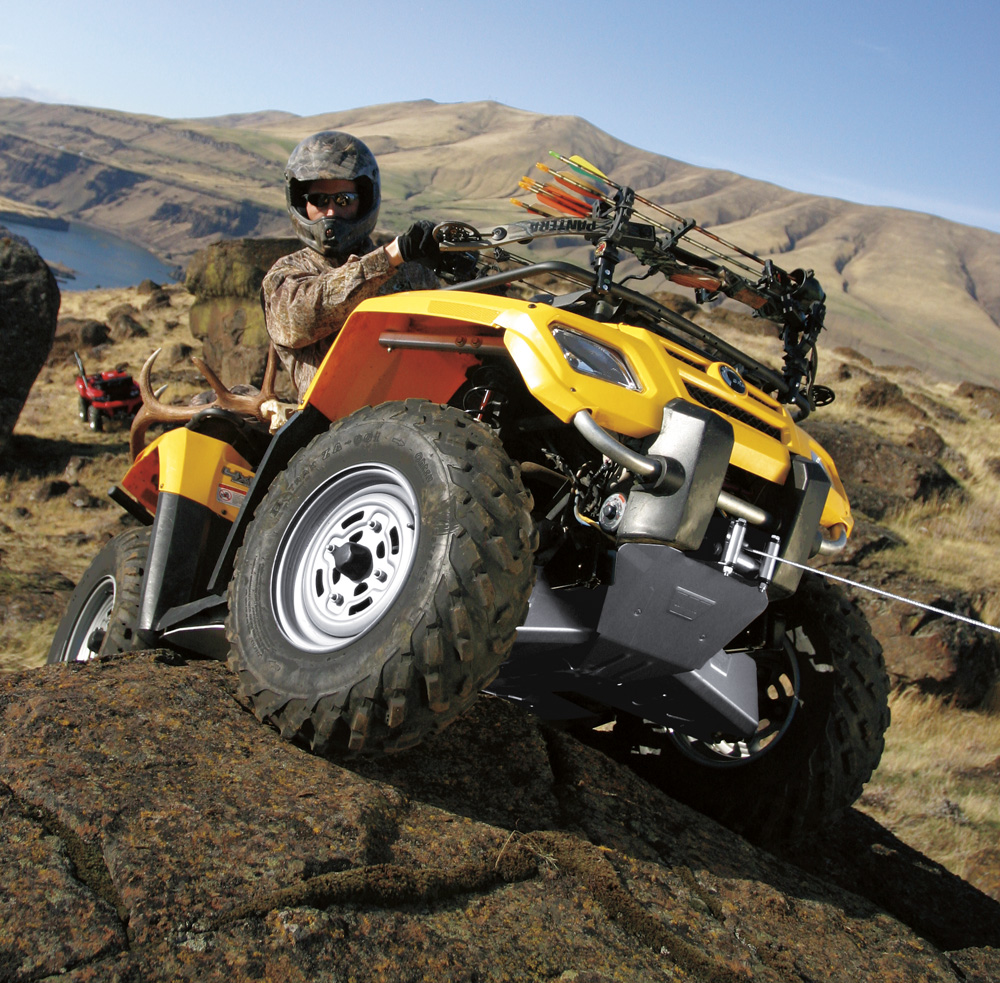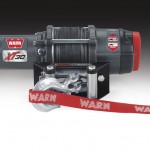So you’ve decided to add a winch to your powersports machine. Welcome to Awesomeville.
If you are a long-time winch user, you might know everything we’re about to share with you. But if you’re just beginning the process of choosing the right winch for your ATV or side by side, here are the things you need to be thinking about. We tapped into the minds of the gang at Warn Industries Inc. to help you make the best-possible winch purchase.
Step 1: Know Your Weight
More specifically, know your gross vehicle weight rating. The general wisdom in the truck and Jeep community is that you multiply your vehicle weight by 1.5 to get your minimum pull rating capacity.
Warn’s tech experts simplify things even more for ATVs and UTVs. They break it down this way:
1,500-pound capacity – A 1,500-pound capacity winch, which is the smallest winch Warn makes, should only be used on quads under 300cc.
2,500-pound and higher capacity – Warn recommends a minimum pull rating of 2,500 pounds for ATVs 300cc or larger.
3,000-pound and higher capacity – Built for the largest ATVs on the market, a 3,000-pound capacity pull rating is also recommended by Warn for one of the most popular side by sides on the market—the Polaris RZR.
4,000-pound and higher capacity – Designed to handle the extra weight of side by side UTVs, 4,000-pound-capacity winches are extra tough. Chuck Norris-level tough.
Step 2: Pick Your Rope
There are two different types of winch cable, and Warn carries both—wire rope and synthetic rope.
Wire rope – Wire rope, or cable, is typically made of aircraft-grade galvanized steel that helps resist corrosion. It is strongly recommended that winch users wear thick gloves when handling wire rope. Over time, as the cable wears, it can develop sharp strands that can easily cut non-gloved hands.
Synthetic rope – Synthetic rope is made from polymer-based materials that are considerably lighter than wire cable. Synthetic rope also has higher tensile strength and is generally characterized as being 25 percent to 40 percent stronger than steel cable.
It’s important to watch out for sharp edges with the synthetic rope, though. Synthetic rope will typically fray more easily than steel cable when run across sharp edges—which is one of the reasons roller fairleads have become the most-common type of fairlead used today. It is important to remember to replace your fairlead if you are replacing a wire rope with a synthetic. This helps avoid damaging the new rope from the rough surfaces of the old fairlead.
“Synthetic rope weighs less than wire rope. And it doesn’t develop burrs over time,” said Andy Lilienthal, Warn’s internet marketing specialist. “It’s really for people doing a lot of winching. It’s just easier to work with.”
Wire rope does have its place, he said.
“Wire rope is incredibly durable,” he said. “If you’re using your winch in a utility aspect—moving logs, bales of hay, you’ll typically want to use the wire rope.”
Step 3: Choose Your Winch
Now that you’re armed with the basics, shop around and choose the winch that makes sense for you.
Warn is an industry leader and offers a variety of great winch options, including these winches for ATVs and side by sides:
WARN Series XT15 – 1,500 pounds of pulling capacity. Perfect for anything under 300cc.
WARN Series XT25 – 2,500 pounds of pulling capacity. WARN’s best-selling winch. Recommended for ATVs 300cc or larger.
WARN Series XT30 – 3,000 pounds of pulling capacity. The XT30 is designed for heftier ATVs—500cc or larger.
WARN Series XT40 – 4,000 pounds of pulling capacity. The XT40 is built specifically to accommodate the extra weight of side by side UTVs.
Bam. Three steps. And now you’re ready for winching.
Now, go get stuck!



[…] pays to be prepared when hitting the trails with “that friend,” and while we have helped you select a winch for your ATV or Side by Side, we want to give you a few pointers on how best to use them […]
[…] vehicles, you will need to choose only 4,000-pound and higher capacity winches for your UTV. (Read: How to Choose a Winch.) They are the perfect tool to get you out of the stickiest […]
Great post! It is worth reading! Very useful!
A nice product with high safety, compact structure and high performance!
Interesting article!
No matter if some one searches for his vital thing, thus he/she desires to be available that in detail, therefore that thing
is maintained over here.